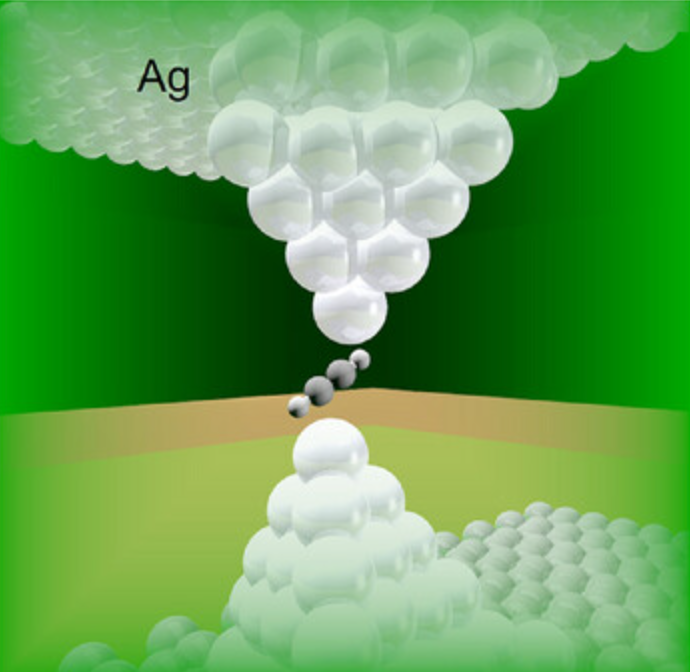Scientists gain groundbreaking insights into aging and body regeneration
In a groundbreaking study that illuminates the entanglement of aging and healing, researchers dove into the biology of a small sea creature.

[July 2, 2023: Staff Writer, The Brighter Side of News]
Repurposing drugs capable of extending lifespan and health span has a huge untapped potential in translational geroscience. (CREDIT: Creative Commons)
In a groundbreaking study that illuminates the intricate entanglement of aging and healing, researchers from the National Institutes of Health (NIH) and their collaborators have dived into the biology of a diminutive sea creature renowned for its extraordinary regenerative prowess.
The insights gleaned from these findings, as published in the journal Cell Reports, enrich our understanding of the fundamental biological processes underlying aging and healing, shedding light on their evolutionary origins, and potentially impacting human health and disease research.
The microscopic, tube-shaped organism, known as Hydractinia symbiolongicarpus, dwells unobtrusively on hermit crab shells, yet its regenerative capabilities are staggering. Capable of growing an entirely new body from merely its mouth, this small animal has become a remarkable model for studying the phenomenon of regeneration.
The NIH team's in-depth research has led to the surprising discovery that senescence, the biological process typically associated with aging, seems to play a pivotal role in Hydractinia's remarkable regeneration.
Related Stories:
“Studies like this that explore the biology of unusual organisms reveal both how universal many biological processes are and how much we have yet to understand about their functions, relationships, and evolution,” said Charles Rotimi, Ph.D., director of the Intramural Research Program at the National Human Genome Research Institute (NHGRI), part of NIH. “Such findings have great potential for providing novel insights into human biology.”
The quest to unravel the evolutionary roots of essential biological processes like aging and healing offers invaluable insights into human health and disease.
Humans do possess a limited capacity for regeneration, seen in processes such as healing a fractured bone or regrowing a damaged liver. Yet, this capacity is far outstripped by certain animals, such as salamanders and zebrafish, which can replace entire limbs and regenerate a variety of organs. But it's within the simplest of organisms, such as the Hydractinia, that we encounter the most extreme regenerative capacities.
Hydractinia's regeneration driving stem cells are stored in the lower trunk of the animal's body, far from the mouth. (CREDIT: Darryl Leja, National Human Genome Research Institute (NHGRI))
Andy Baxevanis, Ph.D., senior scientist at NHGRI and an author of the study, explained that the role of senescence in regeneration is at odds with the typical understanding of its function in human cells. “Most studies on senescence are related to chronic inflammation, cancer, and age-related diseases,” he said. “Typically, in humans, senescent cells stay senescent, and these cells cause chronic inflammation and induce aging in adjacent cells. From animals like Hydractinia, we can learn about how senescence can be beneficial and expand our understanding of aging and healing.”
Past research indicated that Hydractinia possessed a unique group of stem cells dedicated to regeneration. Unlike human stem cells, which play a significant role primarily in development, Hydractinia leverages its regenerative stem cells throughout its lifetime.
Cellular and molecular events accompanying whole-body regeneration from amputated hypostomes. (CREDIT: Cell Reports)
Stored in the lower trunk of its body, these stem cells can transform into various cell types and can create new body parts – a quality pivotal for the organism's extreme regeneration. The researchers theorized that when they removed the Hydractinia's mouth – an area distant from these stem cells – the creature must be generating new stem cells to regenerate.
RNA sequencing pointed the researchers to the surprising involvement of senescence. They scanned the Hydractinia genome for sequences akin to senescence-related genes in humans. Out of the three genes identified, one was activated in cells close to the area where the animal was cut. Deleting this gene blocked the Hydractinia's ability to develop senescent cells, which in turn inhibited the development of new stem cells and prevented regeneration.
Further, the researchers traced the fate of the senescent cells in Hydractinia to unravel how this creature evades the deleterious effects of senescence. Surprisingly, they discovered that the animals expelled the senescent cells through their mouths. This process suggests an entirely different model for managing senescence compared to humans, who can't eliminate aging cells in such a manner.
The unique role of senescence-related genes in Hydractinia presents intriguing possibilities for understanding the evolution of the aging process.
Humanity's last shared ancestor with Hydractinia, as well as with jellyfish and corals, dates back over 600 million years. Interestingly, these creatures show no signs of aging. Because of these factors, Hydractinia can offer invaluable insights about the biological processes of our earliest animal ancestors. Thus, the researchers hypothesize that the original function of senescence in the first animals may have been regeneration.
“We still don’t understand how senescent cells trigger regeneration or how widespread this process is in the animal kingdom,” said Dr. Baxevanis. “Fortunately, by studying some of our most distant animal relatives, we can start to unravel some of the secrets of regeneration and aging — secrets that may ultimately advance the field of regenerative medicine and the study of age-related diseases as well.”
The research into the biology of Hydractinia offers a fascinating foray into the evolutionary history and mechanisms of regeneration and aging. It's a journey that not only elucidates the biology of an extraordinary organism, but also promises novel insights into human health and disease, potentially transforming our understanding of the aging process, and opening new avenues for therapeutic interventions in age-related diseases and regenerative medicine.
Note: Materials provided above by The Brighter Side of News. Content may be edited for style and length.
Like these kind of feel good stories? Get the Brighter Side of News' newsletter.



